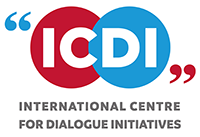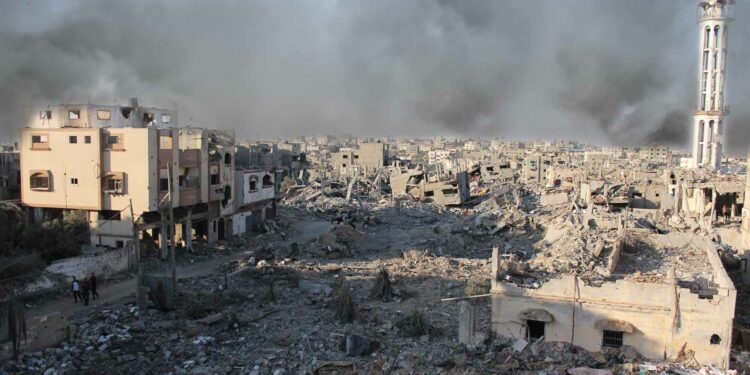Iran is one of the most heavily sanctioned countries in the world. It survives sanctions because it operates in a Hobbesian environment of unrestrained competition with the United States. The Iranian government claims the US-led sanctions regime has cost the nation’s economy more than one trillion dollars, but it has also played a role in strengthening the Islamic Republic’s influence in the Middle East while containing that of the US in the region.
Iran now wants sanctions, particularly those that place maximum pressure on citizens and the economy, to be lifted in return for committing to a peaceful nuclear deal. Among them are sanctions unrelated to its nuclear program which hinder access to global banking and financial transactions. A host of sanctions affect Iran, such as primary sanctions that generally apply to US persons and entities interacting with Iranian banks and businesses, as well as secondary sanctions, that restrict non-US foreign entities and persons from supporting targeted Iranian actors.
In recent weeks the West and Iran have reengaged in discussions about sanctions relief, with a flurry of diplomatic exchanges led by the European Union and indirect Washington-Tehran talks, aimed at averting a crisis as Tehran rapidly expands its nuclear program. Iran’s Arab neighbors are supporting these initiatives, and welcoming Iranian diplomats to their capitals, including to Oman, where US and Iranian nuclear negotiators Brett McGurk and Ali Bagheri Kani held indirect talks in June.
Four decades of US sanctions against Iran
Months after the Iranian Islamic revolution, and days after American diplomats were taken hostage in Tehran, President Jimmy Carter issued Executive Order 12170 to freeze Iran’s government assets in the United States in November 1979. When a deal to release the hostages after 444 days was reached, it involved Iran settling debts to US citizens and companies in exchange for the unfreezing of Iranian assets which were over US $1 billion with interest by the time. Iran delivered on its debts, in the tune of millions of dollars, but its assets remained frozen.
Soon after the hostage crisis, during the Iran-Iraq War (1980-1988), the US imposed a series of arms embargos on Iran on grounds that the country supported terrorism. Washington imposed fresh sanctions on Iran after it emerged that it was developing a massive nuclear program in 2002-2003.
By now, Iran may have more than $100 billion in frozen assets in foreign banks due to the West’s sanctioning of its economy. Some of these assets, which could amount to at least $10 billion, could be returned to Iran due to its participation in recent nuclear talks and as an incentive to settle its nuclear dispute with the West.
Sanctions help and hinder negotiations
After six rounds of US-backed UN Security Council (UNSC) resolutions sanctioning Iran in 2005-2010 over its nuclear program, the country welcomed sanctions relief and signed on to a negotiated 2015 nuclear deal with major world powers – US, Russia, China, France, the UK and Germany – labelled the Joint Comprehensive Plan of Action (JCPOA).
UNSC Resolution 2231 lifted many previous sanctions on Iran on June 20, 2015. It also banned all arms and related materials transfers to or from Iran until October 18, 2021, and paved the way for a case-by-case monitoring of Iran’s military advancements, especially activities that could have dual purposes to develop nuclear weapons.
Under this agreement, Iran would commit to not use goods and technology that could contribute to the development of nuclear weapons until October 18, 2023. But other countries could participate in the supply of conventional arms to Iran as defined by the UN Register of Conventional Weapons, as well as related components and services, if the UNSC offered approval on a case by case basis.
Sanctions were instrumental in reaching these deals, but the JCPOA did not permanently bar Iran from enriching and stockpiling higher levels of uranium for its nuclear program which could bring the country steps closer to producing a bomb. The Countering America’s Adversaries Through Sanctions Act (CAATSA), signed into law in August 2017, aimed to contain this potential threat, by targeting the Iranian ballistic missile and potential weapons of mass destruction programs that could enable the delivery of nuclear bombs.
When the Trump administration withdrew the US from the JCPOA in May 2018, Washington imposed targeted sanctions against Iranian individuals and entities, thereby hindering progress on talks with Tehran. The European Commission invoked a 1996 statute to protect European companies from the extra-territorial application of US-led sanctions, but the measure stood little chance of yielding results unless the US rejoined the JCPOA, which meant that EU companies could not effectively do business with Iran or influence it to comply with the nuclear deal.
Do sanctions advance or hinder peace?
Iran was able to advance its nuclear program after the US withdrew from the JCPOA, by ignoring the terms of the deal. To build a new deal, Washington imposed more sanctions and engaged in indirect talks with Tehran. But the more opportunities Tehran received to renegotiate the sanctions regime, the better it was able to convince the world powers to recognize and protect different components of the complex Iranian nuclear industry. In other words, sanctions, which Tehran called ‘oppressive’ (zalemaneh in Farsi), encouraged mediation with Iran, but they did not prevent Iran from challenging prevailing interpretations that questioned its logic of possessing a strong nuclear program.
The Iranian government also stressed the need for a non-military solution to resolving its nuclear crisis. Supreme Leader Ayatollah Ali Khamenei backed the idea of further nuclear talks, which also brought Tehran time to advance it nuclear infrastructure, but he reminded Iranian negotiators to imagine that they operated in a battlefield to neutralize sanctions, and encouraged developing a sanctions-proof economy (eqtesad-e mogavemati in Farsi).
For Iran, the removal of the sanctions meant that no additional ones would be imposed nor old sanctions re-imposed under any US legal, presidential or congressional act or other pretext. The activation of a ‘snap back’ mechanism in the event of the breach of the JCPOA by Iran would also not bar Iranian access to its energy revenues, in the tune of billions of dollars, that sanctions had previously blocked.
Tehran meanwhile took measures to neutralize the impact of sanctions so that the US would be discouraged from permanently threatening it with more sanctions. It built up ties with Asian countries that challenged US-led unilateralism on the world stage. Russia and China, also targeted by Western sanctions, resisted pressures to isolate Tehran which encouraged Iran’s Look East policy to join the Eurasian Economic Union’s Free Trade Zone, the Shanghai Cooperation Organization, and BRICS Plus.
At the same time, current Western sanctions on Russia and Iran, over their military cooperation and the Iranian drone sales for use in the Ukrainian warfront, constrained but did not prevent the deepening bonds between the two countries. Tehran reportedly even proceeded to set up a drone factory near Moscow. The US also sanctioned in 2023 Iranian and Chinese entities cooperating over Tehran’s missile program, but this did not hinder Iran from unveiling at least two new ballistic and long-range missiles which the West clearly regarded as a threat.
Can sanctions facilitate another new deal?
With Iran’s nuclear enrichment capacity increasing in recent months, drawing it closer to producing fissile material for a nuclear bomb, new rounds of talks with the West have gained pace. While dozens of countries have gone down the path of acquiring nuclear weapons but abandoned their plans, it is clear that Iran will not opt to scale down its enrichment capacity, unless some US and Western sanctions are lifted.
Deterring the Iranian nuclear program through sanctions has clearly failed, but it could be argued that sanctions appear to be a linchpin on which these future talks revolve. Iran’s strategy has been to negotiate from a position of power to get the sanctions removed, by increasing its enriched uranium, rather that succumbing to Western demands to cap its stockpiles, which were by 2020 some 12 times higher than the amounts permitted under the terms of the JCPOA.
In response to a US-led “maximum pressure” policy on Iran, executed through sanctions which played a role in dropping the Iranian Gross Official Reserves from US $122.5 billion in 2018 to US $4 billion in 2020, Iran developed a “maximum resistance” policy by hardening its nuclear positions, building local self-sufficiency, and trading with willing international partners both directly and under the radar.
Iran’s actions clearly aim to push the West to reframe the Iranian sanctions regime. Meanwhile, with the possibility of a new informal or unwritten nuclear agreement on the horizon due to recent talks, also dubbed a ‘political ceasefire,’ Iran still expects guarantees of longer-term US compliance with the terms of such a deal. Otherwise, according to Iranian First Vice President Mohammad Mokhber Dezfuli (who was himself sanctioned while leading indirect talks between Tehran and Washington), the nuclear talks are unlikely to go far because Tehran can no longer afford to pin hopes on Western governments to fix the economic problems that have emerged from the sanctions, nor will it accept the US unilaterally dictating the terms of any agreement.
Dr. Banafsheh Keynoush a Fellow at the International Institute for Iranian Studies, non-resident scholar at the Middle East Institute, and author of The World Powers and Iran: Before, During and After the Nuclear Deal.







